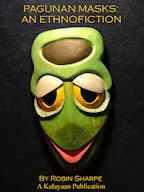The Pagu had no police, courts or jails. They had no criminal law, as we know it, and aside from the moon name prohibitions they had no concept of the rule of law, and the prohibitions dealt with relationships, not acts. Behaviour that harmed others was viewed in terms of a kind of situational ethics rather than prohibited acts. For example, theft was not necessarily wrong. It was, however, wrong to take things without telling the person who had them. It was wrong to take more than one needed at the time. It was wrong to leave the other with less than they needed. Exposure, admonitions and or ridicule, were common remedies for minor transgressions. More serious or persistent ones might be dealt with by shunning. Something like homicide would be resolved through compensation or in some cases banishment, which was feared as much as death. Amoks and murderers might be killed if caught soon after the act, but the Pagu would have considered a death row, where people might remain for years, as too cruel to contemplate. A violent person posing a threat to others could be crippled although this was rare.

